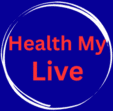
Every day, millions wake up to persistent discomfort—a lingering ache that steals energy and joy. Chronic pain isn’t just a symptom; it can be a life if we let it be. But what if the way out isn’t a pill or a procedure, but something we already carry—our body itself? Groundbreaking research shows that moving in the right ways, at the right pace, with the right structure truly rewires chronic pain, restoring confidence and well-being.
To start, it helps to understand what chronic pain really is: pain lasting beyond normal healing, usually beyond 12 weeks. That tolls physical healing, yes, but it often brings weariness, anxiety, sleepless nights, even depression, creating a vicious cycle. In fact, about 20 percent of adults worldwide live with this ongoing burden. That’s more than the number of people with asthma or diabetes in many populations.
A lucky break? Exercise consistently shows up as a powerful, safe strategy to break that cycle. A comprehensive overview of Cochrane reviews, spanning thousands of studies and tens of thousands of participants, found that tailored physical activity—including aerobic, strength, flexibility, yoga, Pilates, tai chi—did not cause harm. Muscle soreness at the start often subsided as people acclimated.
Why does movement help? Several clear mechanisms are at play. First, aerobic activity can trigger your body’s own pain-relief chemistry—boosting natural opioids and “runner’s high” compounds like β-endorphin and phenethylamine—which dampen pain signals and elevate mood. Over time, this shifts your body’s baseline, making that persistent ache easier to manage.
Then there’s the direct physical lift. Imagine weak muscles holding unstable joints—that’s your body struggling under everyday stress. Lift that tension with strength training, even gentle levels of twice-weekly resistance, and muscles regain their role as stabilizers and shock absorbers. That translates to less pain, more ease, and safer movement.
Flexibility, balance, and low-impact options like aquatic therapy or Pilates offer additional safeguards—offering relief while you rebuild strength and mobility without overstressing vulnerable joints.
Still, it’s important this isn’t about mercilessly pushing through pain. Experts warn that the key lies in structured, supervised, and adaptive exercise, not generic advice. A one-size-fits-all plan—or none at all—can backfire, triggering flare-ups or even cardiopulmonary risks in some cases. For many, that means guided programs or professional input to tailor the pace, volume, and progression.
Breaking free from old patterns of staying still is itself a powerful step—so much so that medical communities now encourage “exercise prescriptions,” alongside or even ahead of medication, giving movement equal billing in modern pain care.
Beyond pain relief, movement boosts mood, energy, sleep, and immune strength. It lowers inflammation, raises natural pain modifiers, lightens stress hormone load, and even sharpens brain function and creativity. A brisk walk after meals, for instance, can lower blood sugar spikes; regular walking supports immunity and calms the mind—without fancy gear.
For people with fibromyalgia, one of the trickiest chronic pain conditions, exercise remains the only strongly recommended treatment by European rheumatology experts. Twice-weekly moderate aerobic activity (like walking or water aerobics), or gentle resistance training, brings real reduction in pain and fatigue, better sleep, and improved quality of life—with very low risk of side effects.
Think of the benefits like shifting gears in a car: starting small and steady—slow walking, gentle stretching, maybe a supervised class—then gradually increasing pace, adding strength, flexibility, balance, waterwork or yoga. The body responds beautifully when respect and patience lead to progress.
Take cases where chronic low-back or joint pain feels immobilizing—motor-control exercises that focus on guided movement can help relieve pain and improve function over months. Pilates or aquatic sessions offer results similar to or better than generalized strength training, especially when tailored to the individual’s condition.
And don’t underestimate the mental-rewiring side. Movement activates neurochemical systems that alleviate stress and improve mood—even a single session can help brain clarity and calm stress reactivity. A large, 2024 meta-analysis of over 14,000 participants found exercise was as effective as psychotherapy and medication for mild-to-moderate depression, and more intense movement delivered greater benefit. For someone dealing with chronic pain, breaking that mental-pain feedback loop may be one of the most important gains.
But here’s one of the most hopeful truths: you don’t need to be a fitness fanatic to benefit. Studies show even small steps—literally—help. Walking a little, gradually adding strength or stretching, and staying consistent can shift pain levels and mood. The real power lies in starting and sticking with it.
Neurosurgeons too note that healthy weight management, core strengthening, and regular low-impact movement like walking or swimming are key to lasting spinal health. A sedentary lifestyle risks muscle weakness, elevated shear on joints, and worsening pain—not to mention the low mood that often accompanies it.
That’s why well-structured, supervised routines matter so much. A gradual, tolerable plan moves you forward—physically and psychologically—without triggering setbacks. Over time, the body’s resilience rebuilds, aches soften, sleep improves, and confidence grows.
Ultimately, exercise for chronic pain isn’t about doing more—it’s about doing what fits: simple movement tailored to where you are, guided by your body’s needs, and steadily building your strength, stability, and joy in motion. It’s a shift from pain telling the story, to movement writing a different ending.
